When Lana Turner’s Abusive, Gangster Boyfriend Was Killed—by Her Daughter
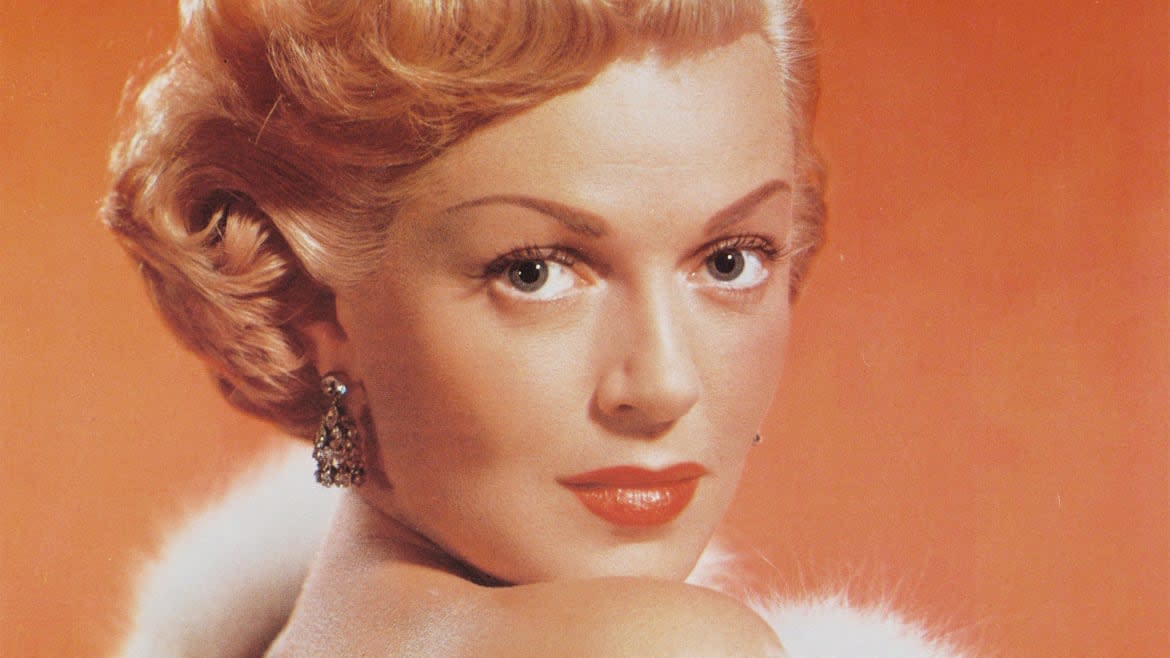
The movie star Lana Turner had been trying to break up with her abusive mafioso boyfriend for some time. On the April evening of Good Friday 1958, she decided to end things once and for all. The story goes that she had discovered that Johnny Stompanato was not in fact 43, as he had told her, but four years her junior, 32, and it was the last straw.
In the melee that ensued in the Turner home after Stompanato objected to the star calling it quits, the young “underworld figure,” as the New York Times dubbed him, would end up dead from a knife wound to the stomach and Turner’s 14-year-old daughter would go on trial for murder.
‘Mad Men’ Creator Matthew Weiner Reads Frank O’Hara’s poem about Lana Turner
Turner’s early life in the pictures was the stuff of Hollywood legend. She was discovered (ice cream parlor, skipping class) at a young age (16) and immediately given a role in her first film (They Won’t Forget, murder victim).
Her career was prolific despite her questionable talent. (John Houseman, who produced her film The Bad and the Beautiful, told the Times that she “was capable of brilliant individual scenes, but seemed to lack the temperament or the training to sustain a full-length performance.”) She was nominated once for an Oscar for Best Actress (Peyton Place), but lost to Joanne Woodward (The Three Faces of Eve).
But Turner had something even better than talent, as far as the Golden Age of Hollywood was concerned. She exuded a sensuality and glamour whose allure was only matched by her real life antics. She was the ur-Sweater Girl, a Hollywood sex symbol who was also given the sobriquet “Queen of the Nightclubs” for the rounds she would make to all of the hottest spots in L.A.
Her romantic entanglements fed the Hollywood press, and she would marry eight times to seven husbands throughout her life. (As her daughter later noted, if she had lived during a different era, she probably would have kept many of the men as boyfriends rather than feel she had to marry them for propriety’s sake.)
Turner embodied the Hollywood glamour that was a siren call to Stompanato, leading the young former WWII marine to abandon his wife and young son in Illinois and to head for the California coast.
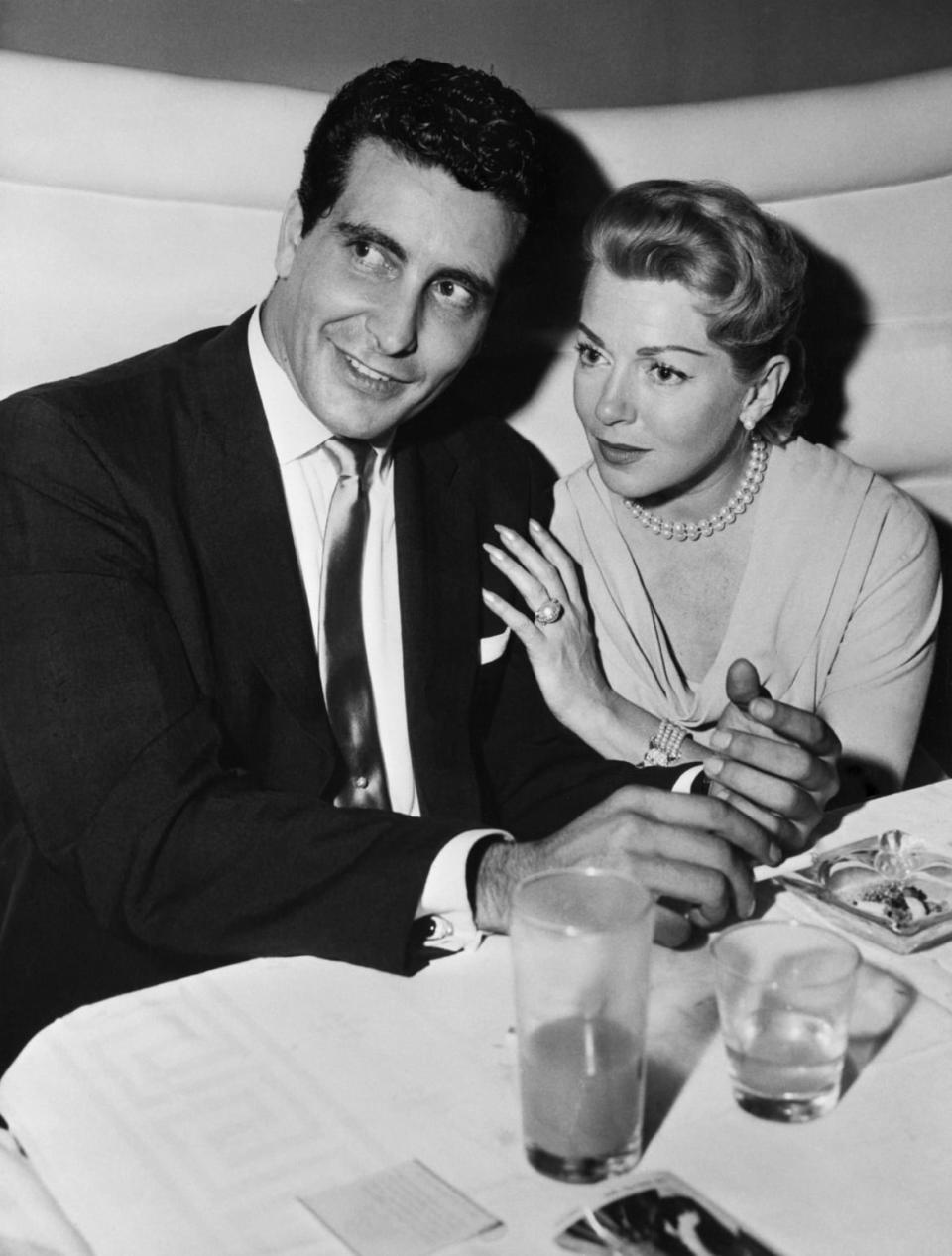
Johnny Stompanato with Lana Turner at a Hollywood nightclub.
The seeds of the future minor mafioso had been planted in childhood, though many in his hometown were surprised by the turn Stompanato’s life took.
An Italian growing up near Chicago during the era when the city was the center of the country’s mafia activity, the young boy was often teased during childhood as being from organized crime, though there is no evidence that the Stompanatos were anything but upstanding small business owners. But what he did have was a smooth tongue and a tough attitude, as his former classmates recalled to Richard Babcock in Chicago Magazine.
Stompanato also had an early obsession with women, particularly older women. (Some have suggested that this propensity may have been driven by the loss of his mother six days after his birth.)
One report home from the military high school he attended stated: “Better than average intelligence and a quick learner when he wishes, but interested in little but salacious literature and women.”
One of his classmates also told Babcock that he always seemed to be sick on the mornings when the boys would be roused for unexpected marches, and it was widely “suspected that he was having an affair with a nurse, who would alert him to the surprise drills.”
After serving in World War II, Stompanato returned home with a wife and settled down in Illinois. But he soon got restless and left his family for the golden hills of Hollywood.
Much of Stompanato’s life is characterized by the twin banes of journalism: rumor and lack of evidence. Many following his death reported that he had been the bodyguard of the notorious L.A. mobster Mickey Cohen, but most evidence points to his role in the outfit being much more minor than that.
In his autobiography, Cohen characterized the young Italian as “like a kid brother,” and other evidence from the time, including FBI files, point to Stompanato being something of a Johnny-on-the-spot for the mobster—running errands, collecting money, and the like.
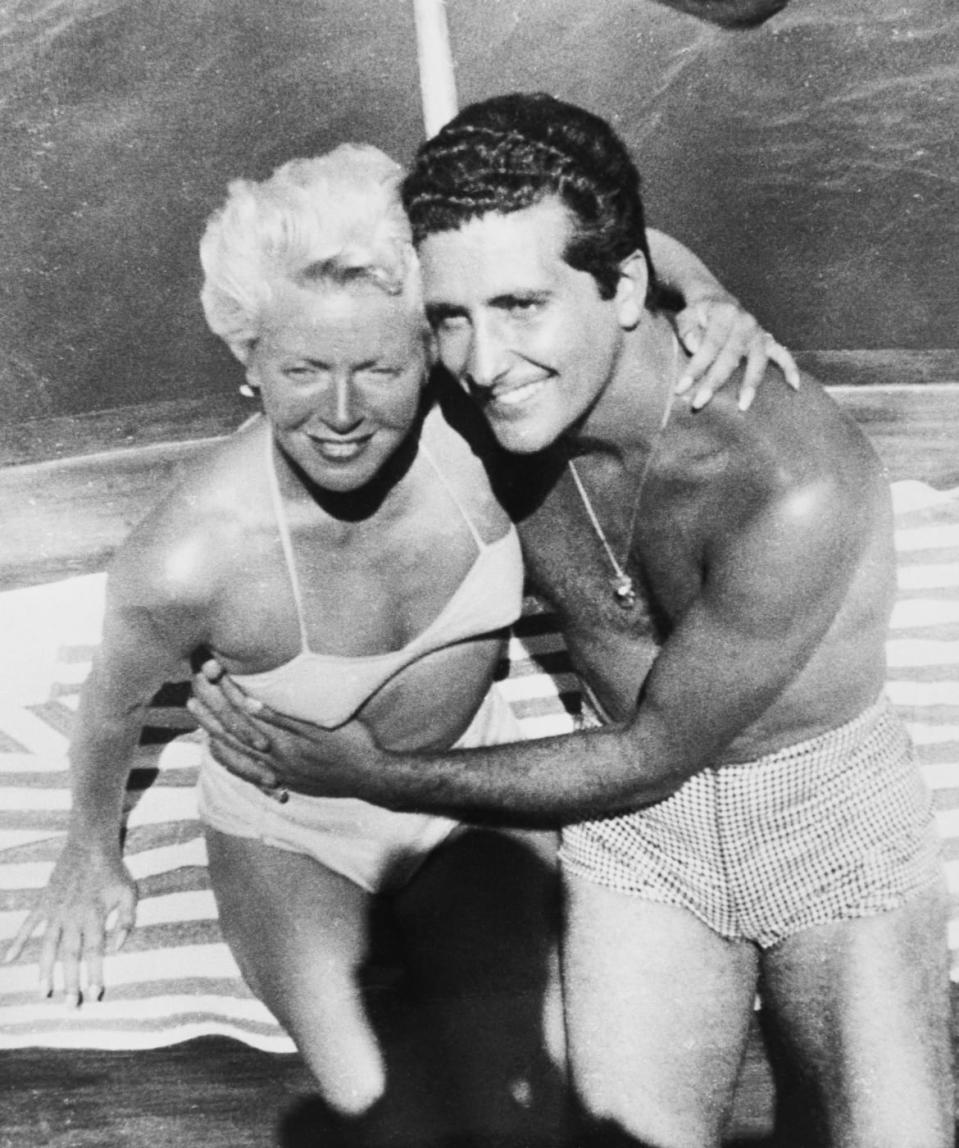
Lana Turner and Johnny Stompanato photographed aboard a pleasure craft in Mexican waters just days before Stompanato was stabbed to death.
He also ingratiated himself into the lives and pocketbooks of many of the rich and famous ladies of Hollywood. He was associated to varying degrees of romantic success with Helen Gilbert, Janet Leigh, and Helene Stanley. When he set his sights on Ava Gardner, Frank Sinatra appealed to Cohen, who allegedly responded, “I don’t mix in with no guys and their broads, Frank.”
Stompanato had a system of targeting the beautiful and financially well-endowed, one that may have benefited Cohen as well. When he approached Lana Turner, he did so using an alias, as was his style. Turner believed she was being wooed by a “John Steele,” and it wasn’t until after the pair began dating in 1957 that she found out who he really was.
As can only be expected in a relationship that begins with a lie, the affair was volatile almost from the start. Turner was concerned about being seen publicly with a man associated with organized crime; the controlling and jealous Stompanato didn’t appreciate being sidelined.
Things began to come to a head in the second half of 1957 when Turner was in London filming Another Time, Another Place with Sean Connery. The relationship had already turned physically violent, and filming in England was a way for the actress to create a little space. But Turner eventually caved—maybe to loneliness, maybe to the pull of an explosive romance—and invited Stompanato to join her.
The pattern continued. At first things were fine, then Stompanato became jealous and violent, according to Turner. Some reports say the final provocation happened after the mafioso allegedly pulled a gun on Connery on the movie set after hearing rumors that the co-stars were having an affair; others that it was an attack on Turner that was so violent that filming was disrupted while she recovered.
Whatever the final straw, Scotland Yard was called in and Stompanato was deported.
After filming was complete, Turner decided to take a vacation alone in Acapulco, but Stompanato discovered her plans and invited himself along. During their two months in Mexico, things turned even more violent. Stompanato would routinely threaten the actress—shoving a gun in her face, saying he would go after her family including her young daughter, and threatening suicide.
Turner kept her plight private, not wanting the publicity that seeking help would bring, and the ordeal only ended with the news that she had been nominated for an Academy Award.
“Underlying everything was my shame. I was so ashamed. I didn’t want anybody to know my predicament, how foolish I’d been, how I’d taken him at face value and been completely duped,” Turner later said.
Things were a bit calmer when they returned to the States, though Stompanato was not pleased when Turner took her daughter, Cheryl Crane, as her date to the Oscars instead of him. Just over a week later, Stompanato arrived at Turner’s new rental house on North Bedford Drive on a rainy Friday night.
According to Patricia Bosworth in Vanity Fair, Turner had decided to end things that night once and for all. After bringing up Stompanato's lie about his age, a fight predictably ensued. Crane heard the commotion and came to check on her mother, who told her to go to her bedroom. But it was impossible to escape the sounds of Stompanato’s rage.
“[H]is neck veins stood out and he breathed from one side of his mouth. He hunched his shoulders as though he were going to pull out a pair of six-shooters, while the hands at his sides clenched and writhed like a snake’s tail in death,” Crane wrote in her 1988 autobiography Detour: A Hollywood Story.
Then, she overheard him threaten her mother again. “He said when a man works with his hands, I will cut off his hands. You work with your face, and I will destroy your face. And if I can’t do it, I have friends who will. And your mother and your kid are next,” Crane later recounted in an appearance on The Phil Donahue Show.
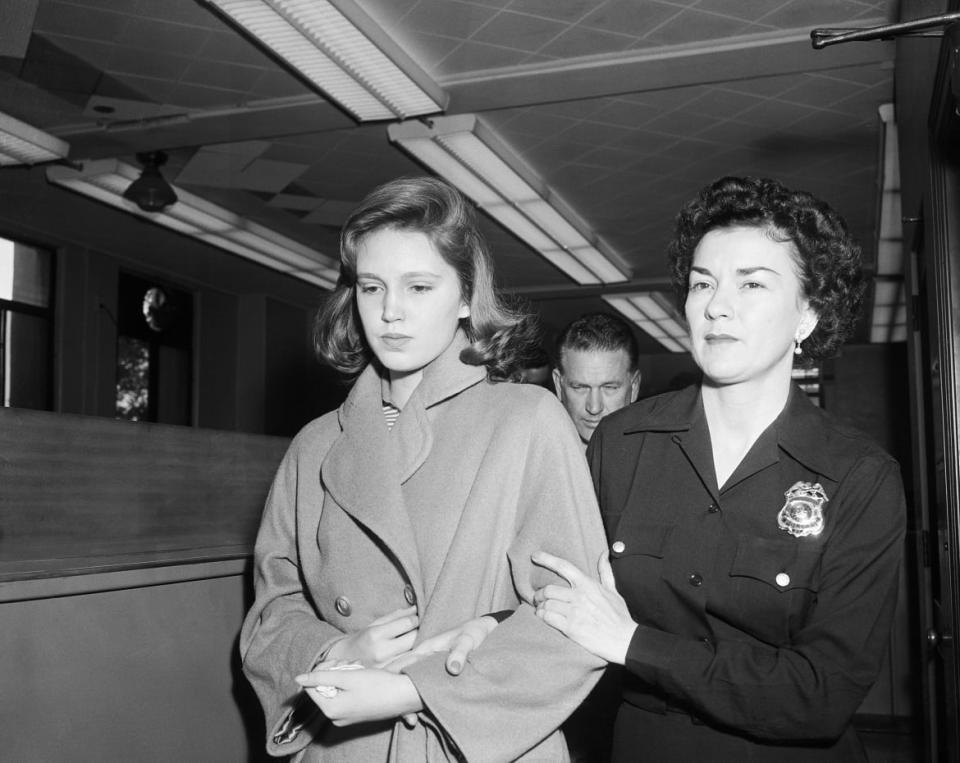
Cheryl Crane (left) is escorted from jail to juvenile hall in Los Angeles by policewoman Margaret Weissberg.
Crane told People that she doesn’t remember grabbing an 8-inch knife from the kitchen before going back up to her mother’s bedroom. She banged on the door and when it opened, Stompanato was looming behind her mother.
Crane came into the bedroom and Stompanato walked towards her. In an act that has variously been described as Crane pushing the knife into his stomach and Stompanato walking into the deadly weapon, the mafioso was stabbed through several vital organs in one plunge.
Turner later recounted that the act happened so fast, she didn’t realize there was a knife involved. She initially thought her daughter had punched or poked her former lover.
“My God, Cheryl, what have you done?” Stompanato allegedly said, before falling to the pink carpet. Within five minutes, he was dead. “It was like I came out of a dream and everything came apart,” Crane told People.
Crane called her father, restauranteur Steve Crane; Turner called her mother who called the family doctor. Within a short time, the EMS and police had descended on the house.
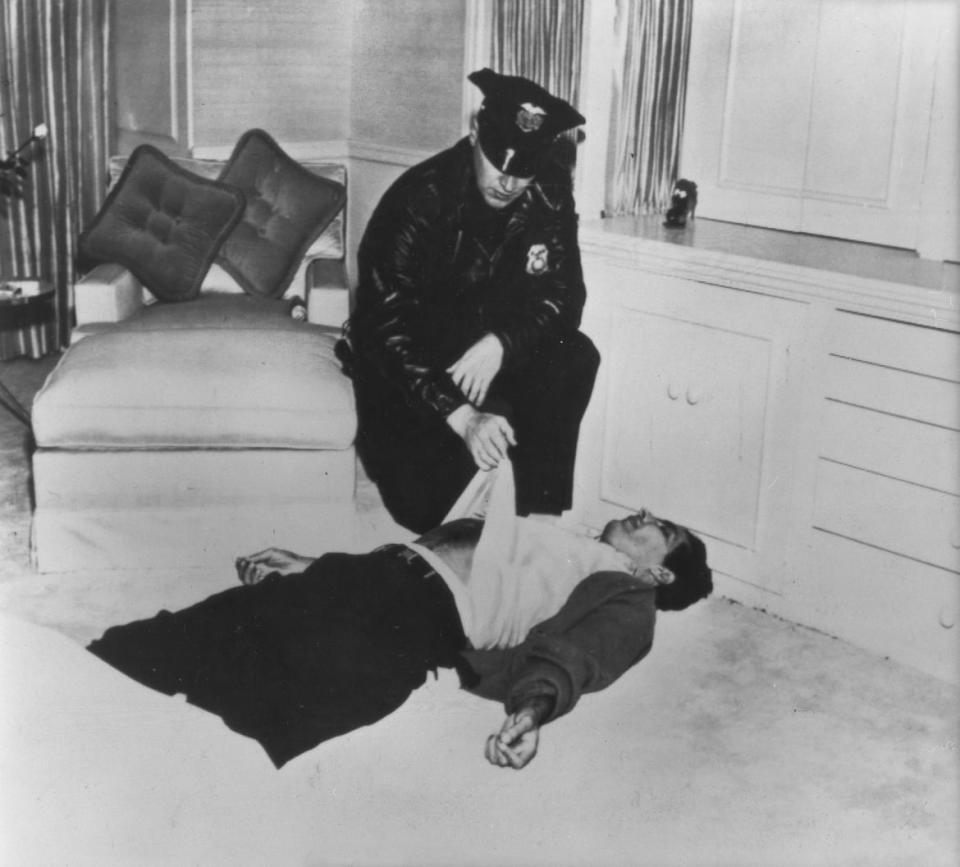
According to James Bacon, an AP reporter who snuck into the house on the pretense of being the coroner’s assistant, Turner asked Beverly Hills Police Chief Clinton Anderson, “‘Can I take the blame for my baby?’ or some such thing, and Anderson tells her, ‘Not unless you actually committed the crime.’ And Lana bows her head and says, ‘O.K., Chief, it was my daughter.’”
In court, Turner took the stand; her daughter, who was accused of murder, did not. Deliberations were short and the verdict final: Stompanato’s killing was a justified homicide. Upon hearing this ruling, the Los Angeles Times reported that Turner went home where “she was put to bed immediately and given sedatives.”
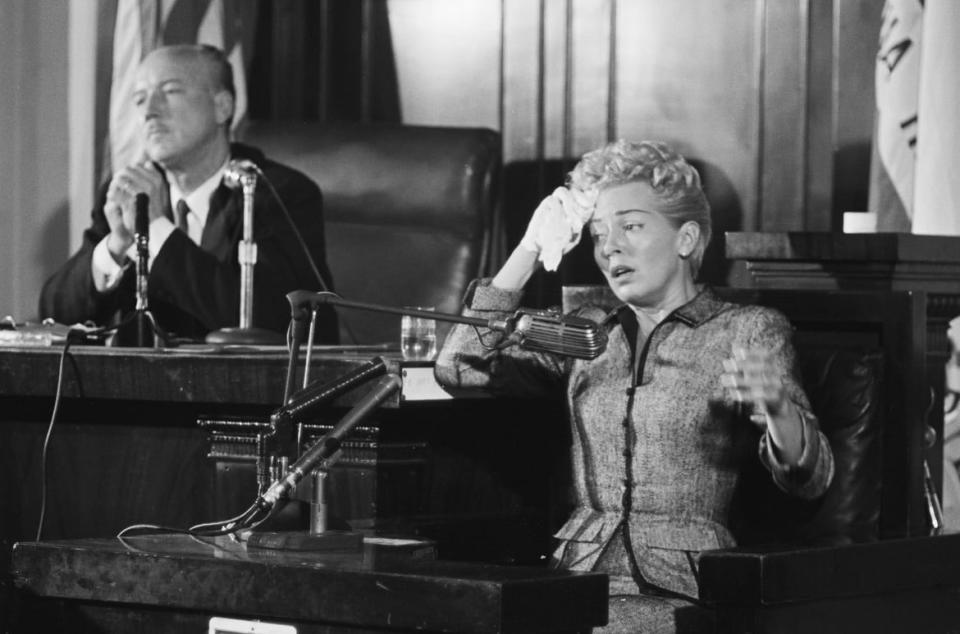
Lana Turner testifies at the inquest into the death of Johnny Stompanato.
Crane’s recovery was not quite so simple. For years she floundered, engaged in destructive behavior that she described to Donahue as something of a self-punishment.
In her autobiography, she revealed that her step-father Lex Barker had sexually abused her for three years starting before the age of 10. She wrote that she had also been sexually abused by Stompanato. She told Donahue that her parents never discussed the murder with her, and that it wasn’t until years later that she and her mother spoke about what happened and became a tight-knit pair.
As is to be expected of one of the biggest scandals to ever hit Hollywood, a veil of doubt still lingers around the affair. Stompanato’s family, in particular, always believed that there was more to the story.
One of the prevailing conspiracy theories holds that Lana Turner was the one holding the knife that night, and that Crane took the blame knowing that the punishment wouldn’t be as severe. But the story told by the main players never changed.
Get our top stories in your inbox every day. Sign up now!
Daily Beast Membership: Beast Inside goes deeper on the stories that matter to you. Learn more.

